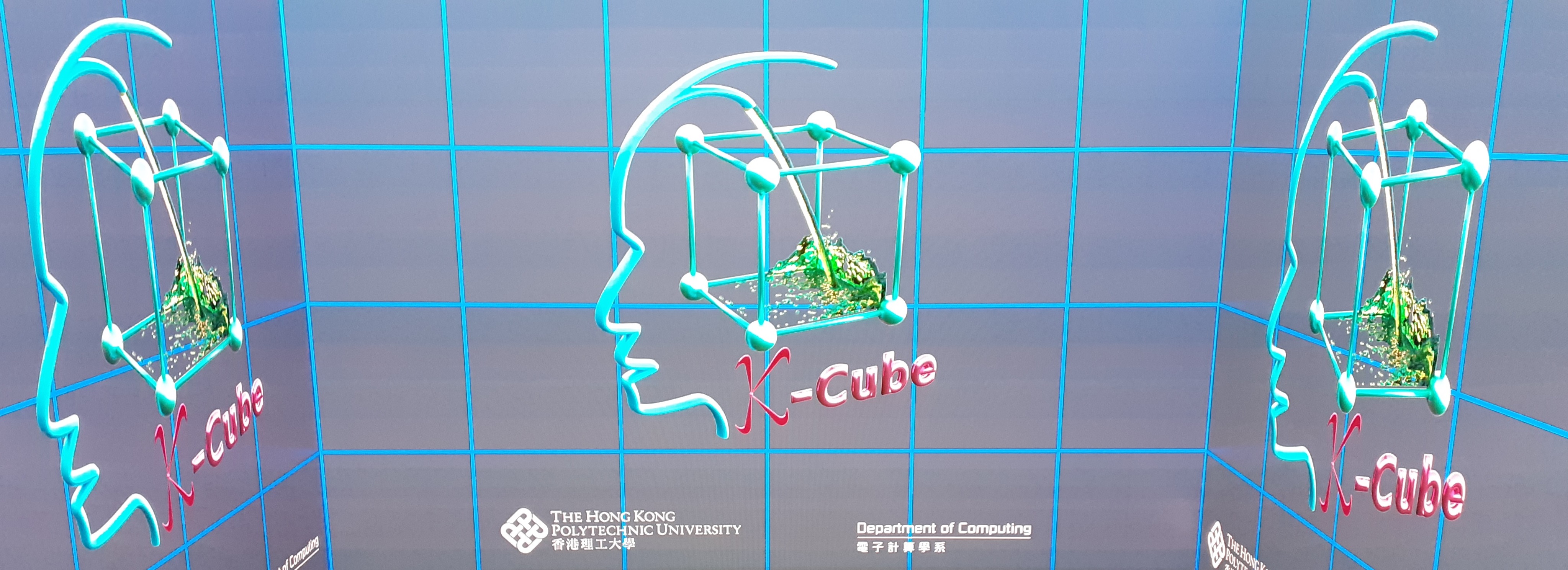
K-Cube in Classroom
The K-Cube immersive knowledge graph has been used to illustrate concepts in the classroom. Students were introduced to the basic concepts of the Metaverse, its applications, and its challenges by a generated avatar, the Virtual Peter (VP), whose head and face fully resembles that of the actual instructor.
This is the first lecture given by VP. Our exploration starts with the understanding of the fundamentals of the Metaverse. Imagine a digital space where you can learn, work, and play in a fully immersive environment. Here the boundaries of reality stretch beyond the physical into the realm of limitless creativity and innovation. We dwelve into the course structure of the Metaverse, disecting its layers from digital twins and blockchains to virtual economies and immersive extended experiences. Each class is a step deeper into understanding how these technologies converge to create new worlds. Prepare for hands-on workshops where theory meets practice from creating digital twins to building interactive immersive spaces, you will apply what you learn in real-world projects.
This is the second lecture given by VP. Here, we embark on the exploration of the SANDBOX, the cornerstone of the Web 3.0 revolution. The Web 3.0 is a world underpinned by blockchain technology, smart contracts, and decentralized applications ensuring user privacy and full digital ownership. Here, every digital interaction becomes a step towards more open and secure on-line world. The SANDBOX stands as a testament to the power of user generated content within the Metaverse. It is not just a game or a virtual world, but a dynamic digital ecosystem where creativity knows no bounds. From intrical digital art to complex interactive experiences, the SANDBOX offers a canvas for digital creators world wide.
This is the fourth lecture given by VP. This lecture explores the dynamic world of game development and the Metaverse where innovation meets entertainment. We dwelve into the game market and industry to uncover the powerful architecture of game engines and discover how new technology like DOTS, or Data-Oriented Technology Stack, and ECS for Unity3D are shaping the future. The videogame industry is a behemoth with numbers that stagger the imagination. From global revenues to player demographics, the statistics reveal a sector in robust health growing both in scope and scale. This growth is fueled by ground-breaking game technologies that push the boundaries of what is possible.
This is the fifth lecture given by VP. It explores the world of mixed reality MR and extended reality XR where the boundaries between physical and digital worlds blur. In this exploration we uncover the layers of virtual reality VR, augmented reality AR and their profound impact on how we interact with the environment, learn and entertain ourselves. Mixed reality and extended reality represent a spectrum of immersive technologies. From the fully immersive digital realms of VR to the augmented layers of digital information in AR these technologies redefine our perception of reality enhancing the ways we interact with boh digital and physical spaces. Human-computer interaction (HCI) in mixed reality is governed by criteria such as user comfort, data processing efficiency, image realism and the seamless integration of real and virtual objects.
This is the sixth lecture given by VP. This is the evolving land of conversational agents, powered by advancements in natural language processing, are transforming the way we interact with digital platforms. In this lecture, we journey on the road of chatbot development from foundational concepts to the integration of state-of-the-art language models. Digital chatbots are not just tools for customer service, they are gateways to more interactive digital experiences. From Siri to Google Assistant, these agents are becoming increasingly sophisticated, capable of chatting for fun, setting reminders, or serving for various purposes. Diving deeper into the research of conversational agents, we find two major directions of development: open domain chatbots designed for informal chatting and task-based dialog agents build for specific task completions such as booking flights, coding, or managing smart-home devices.
This is the seventh lecture given by VP. This explores various facets of privacy, including its definition, harms, trust, and the legal framework designed to project them.
This is the ninth lecture given by VP. This explores the fundamentals of Blockchain and the Metaverse. The lecture explores how Blockchain is fundamentally reshaping our digital and economical landscapes and its burgeoning role in the Metaverse. Blockchain is essential to the Metaverse because it is the fundamental mechanism for trust and security in the digital world. It provides a robust platform for safe transactions without the need for a central oversight. Thus, it addresses the key issues in transparency and security in digital transactions. Blockchain technology represents a significant shift from centralized to decentralized systems. This architecture not only enhances transparency, but also ensures security through cryptographic techniques making every transaction verifiable and immutable.
